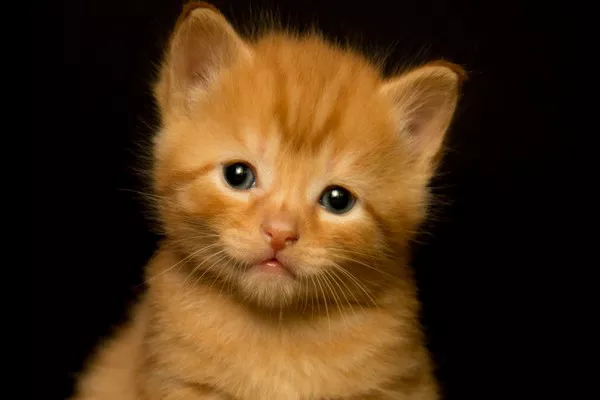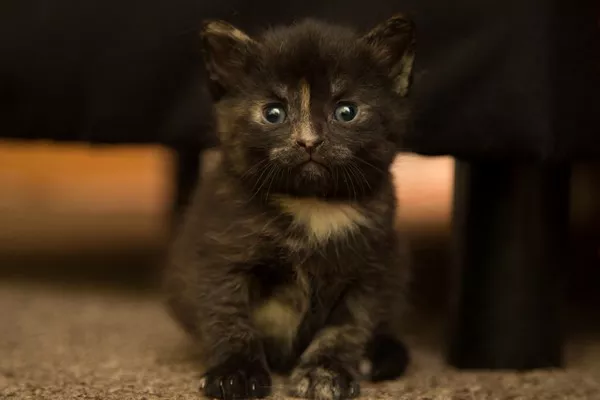Maintaining the overall health of our feline companions is a responsibility that every cat owner should prioritize. One of the critical aspects of cat health that is often overlooked is the condition of their gums. The color of a cat’s gums can provide vital information about their health status, indicating potential issues that may require immediate veterinary attention. This article aims to elucidate the significance of gum color, how to assess it effectively, and other indicators of oral health that every cat owner should monitor.
Cats’ Normal Gum Color
Healthy cat gums should exhibit a pale pink color, akin to that of a person’s gums. This specific shade is indicative of proper blood circulation and overall health. When observing your cat’s gums, they should appear smooth, moist, and free from lesions or discoloration. If your cat’s gums fall within this normal range, it usually signifies that they are in good health and that their cardiovascular system is functioning properly.
A quick assessment of gum color can serve as an initial indicator of your cat’s well-being. If the gums are not the expected pale pink hue, it may be time to delve deeper into potential underlying health issues.
How to Check Gum Color
To check your cat’s gum color, the process is straightforward but requires a gentle and calm approach to minimize stress for your feline friend. Follow these steps:
Find a Quiet Space: Choose a comfortable, quiet space where your cat feels safe. This will help reduce any anxiety your cat may have during the examination.
Gently Lift the Lip: Using your thumb and forefinger, carefully lift your cat’s upper lip to expose the gums. Be gentle to avoid startling your cat, and take your time to ensure they remain calm throughout the process.
Observe the Color: Once the gums are visible, check the color. Ensure you have good lighting to see the hue clearly.
Assess Texture and Moisture: While checking the color, feel the texture of the gums. They should be smooth and moist, not dry or sticky.
It’s important to perform this check regularly, ideally during grooming sessions, so that your cat becomes accustomed to the process and it becomes less stressful over time.
Variations and What They Mean
Pale Gums: Pale or white gums are not normal for healthy cats and can indicate a range of serious health issues. Conditions such as anemia, significant blood loss, or poor circulation may be at play if you notice your cat’s gums have lost their pink hue. These symptoms warrant an immediate visit to the veterinarian, as they can indicate life-threatening conditions.
Red or Inflamed Gums: If your cat’s gums appear red or inflamed, it may be a sign of gingivitis or another form of oral infection. Gingivitis is an inflammation of the gums that can progress to periodontal disease if not addressed. It is essential to seek veterinary care promptly if you observe these symptoms, as early intervention can prevent further dental health issues.
Blue or Purple Gums: Gums that appear blue or purple are a serious concern, indicating potential oxygen deprivation or circulatory problems. This condition requires urgent veterinary attention, as it may signify severe health issues that could be life-threatening. If you notice this color in your cat’s gums, do not delay in seeking help.
Yellow Gums: Yellowing of the gums, known as jaundice, can suggest liver dysfunction or other serious health conditions. If your cat’s gums appear yellow, it is crucial to consult a veterinarian immediately to determine the underlying cause and begin appropriate treatment.
Other Indicators of Gum Health
Texture: Healthy gums should feel smooth to the touch. They should not be dry or sticky, as these signs can indicate underlying health issues. Sticky gums may point to dehydration, while rough textures can suggest periodontal disease.
Bleeding: When assessing gum health, it is vital to consider whether the gums bleed easily. Healthy gums should not bleed when touched gently. If your cat experiences frequent bleeding from the gums, it could indicate dental issues, infections, or systemic health problems that require veterinary attention.
Prevention
Regular Dental Check-Ups
Regular dental check-ups are paramount for maintaining gum health and preventing dental diseases. Most veterinarians recommend dental examinations at least once a year, with more frequent visits for cats who are prone to dental issues. Professional cleanings can help remove plaque and tartar that regular brushing might miss, significantly reducing the risk of gum disease.
Home Care
In addition to professional veterinary care, you can take proactive measures to maintain your cat’s oral hygiene at home. Here are some essential tips for promoting good oral health:
Brush Your Cat’s Teeth: Regularly brushing your cat’s teeth with a cat-safe toothbrush and toothpaste can significantly reduce the buildup of plaque and tartar. Aim to brush your cat’s teeth at least two to three times a week.
Dental Treats and Toys: Providing dental treats and toys can help reduce plaque and tartar buildup. These products are designed to encourage chewing, which naturally cleans the teeth and gums.
Monitor Diet: A balanced diet that supports oral health is crucial. Consult your veterinarian about the best diet options for your cat, as some foods are formulated to help reduce dental problems.
Stay Alert for Changes: Regularly check your cat’s gums and teeth for any changes in color, texture, or overall health. Being vigilant can help catch potential problems early, ensuring prompt treatment.
Conclusion
The color of your cat’s gums serves as an essential indicator of their health. Healthy cat gums should be a pale pink color, indicating proper blood circulation and overall well-being. By learning how to check your cat’s gum color and recognizing the signs of potential issues, you can play a vital role in maintaining your pet’s health. Regular veterinary check-ups, combined with attentive home care, are essential to ensure that your cat enjoys a long and healthy life. If you notice any irregularities in your cat’s gum color or overall dental health, do not hesitate to consult your veterinarian. Remember, early detection and treatment are key to ensuring optimal cat health.
Related Topics



























